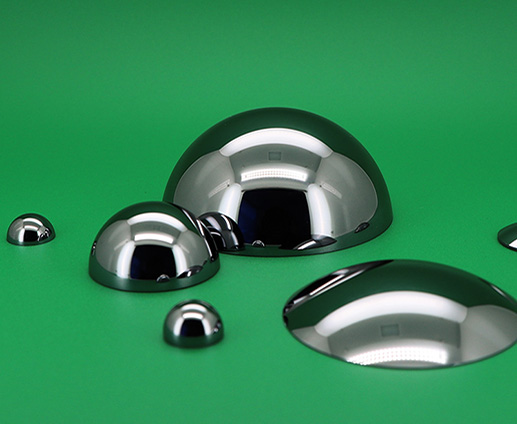In the realm of optical technology, the question of scratch resistance holds paramount importance. Optical domes often used to protect sensitive equipment such as cameras and sensors, play a crucial role in maintaining the integrity of these devices. The short answer to the query, "Are Optical Domes Scratch-Resistant?" is nuanced and depends on the materials used in their construction.

The Material Matters
Optical domes are typically crafted from various materials, each with its unique properties. Common materials include acrylic, polycarbonate, and glass. Acrylic, known for its lightweight and cost-effective nature, is vulnerable to scratches. On the other hand, polycarbonate offers enhanced durability but may still succumb to abrasions under certain conditions. Glass, although heavier, often provides superior scratch resistance compared to its counterparts.
Scrutinizing the Science
The scratch resistance of optical domes is determined by the hardness of the materials employed. Hardness, in the context of materials science, refers to a substance's resistance to permanent deformation, such as scratching or indentation. Materials with higher hardness are less prone to scratches. For optical domes, manufacturers employ coatings or treatments to enhance hardness and mitigate the risk of scratches. These protective measures are crucial for ensuring the longevity and optical clarity of the domes.
Related articles:How Does a Multi-Head Weigher Work?The Motor and Propeller Test Kit: Components and FeaturesKey Features and Functionality of Drone Engine Test Bench How to Use Freeze-Drying Machine to Process Premium Pet Food?Exploring Plano Mirrors and Concave Mirrors: Understanding Their Applications and CharacteristicsWhat is a thrust stand for drones?What is the use of MEMS gyro?Significance for Optical Clarity
The scratch resistance of optical dome components is not merely a matter of aesthetics; it directly impacts the devices' performance. A scratched dome can distort images, compromise data accuracy, and reduce the overall functionality of cameras and sensors. In critical applications, such as surveillance or scientific research, maintaining optimal optical clarity is imperative. Therefore, the scratch resistance of optical domes becomes a pivotal factor in ensuring the reliability and precision of the equipment they protect.
Impact on Long-Term Maintenance Costs
Considering the potential consequences of scratched optical domes, their impact extends beyond immediate operational issues. Regular replacement or maintenance of damaged domes can incur significant costs for businesses and organizations. Investing in scratch-resistant materials upfront can result in long-term savings by reducing the frequency of replacements and minimizing downtime.
In conclusion, the scratch resistance of optical domes is a multifaceted consideration that demands careful attention. The materials chosen for construction, their inherent hardness, and additional protective measures collectively contribute to the overall scratch resistance. As technological advancements continue, the quest for even more resilient materials and innovative protective coatings persists, ensuring that optical domes lens evolve to meet the ever-growing demands of diverse industries. Balancing cost-effectiveness with performance remains a key challenge, but the pursuit of scratch-resistant optical domes remains essential for the sustained functionality and clarity of advanced optical systems.
Related articles:Applications of UV Grade Fused Silica Plano-Convex LensesSpherical Lenses: Unveiling the World of OpticsThe Evolution of Digital DC Millivoltmeters: From Analog to PrecisionWhy Choose UV Grade Fused Silica Plano-Convex Lenses?Advantages of Engine Test Benches for Performance TestingDrone Test Stand: Revolutionizing Unmanned Aerial Vehicle TestingHow do you test for ionic contamination?




Comments
0Related Articles
By Justin
104
0
0
By Justin
103
0
0
By Janey
96
0
0
By Steve
98
0
0
By Justin
98
0
0
By Harry
100
0
0
By wenzhang1
100
0
0
By Jesse
101
0
0